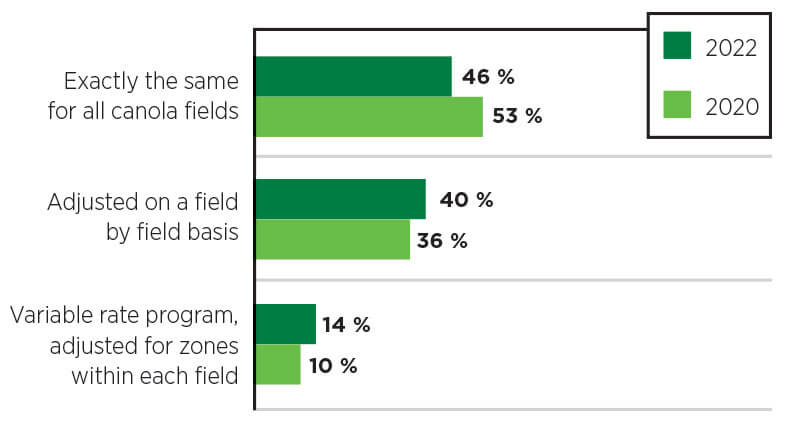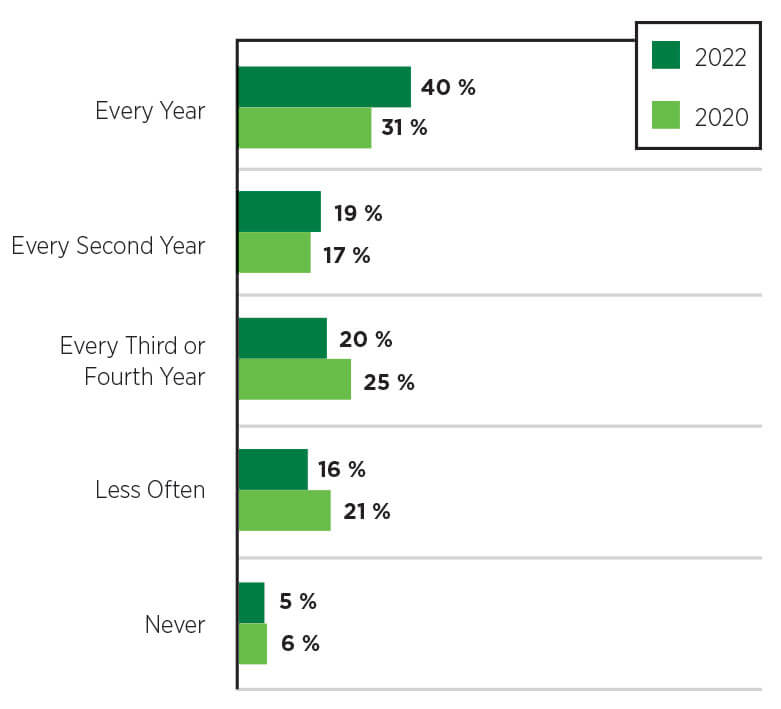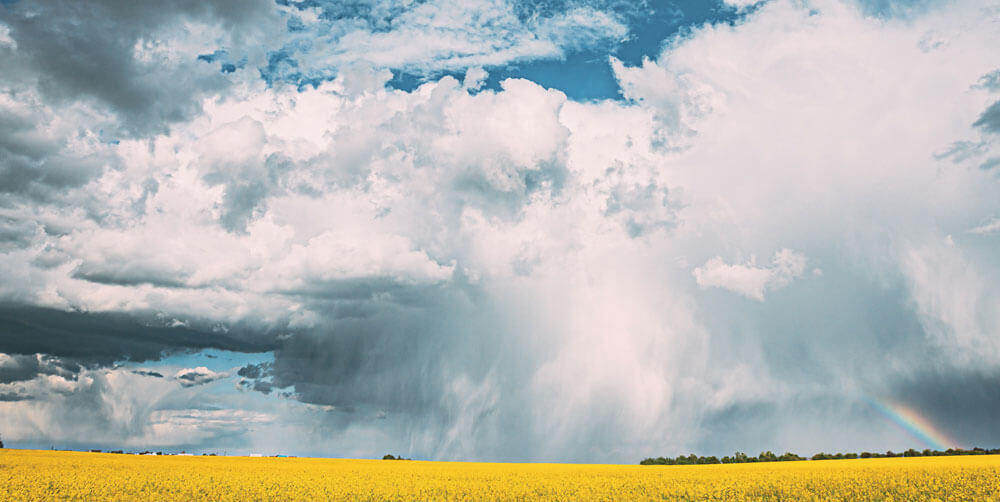Farmers want canola-friendly weather
 The Canola Council of Canada grower survey of late 2022 asked growers to identify one change that could make the biggest improvement in their canola yield. Weather was the most common response, with 38 per cent of the answers mentioning cooler and rainier summers, less spring moisture and other meteorological conditions. While weather was well out in front in Alberta and Saskatchewan, Manitoba growers had an almost even split between weather (25 per cent mentioned this) and flea beetles (21 per cent mentioned this, compared to only four per cent in Saskatchewan and one per cent in Alberta.) Down the list, 15 per cent of answers related to seed choice, and 10 per cent were on the theme of fertilizer rates.
The Canola Council of Canada grower survey of late 2022 asked growers to identify one change that could make the biggest improvement in their canola yield. Weather was the most common response, with 38 per cent of the answers mentioning cooler and rainier summers, less spring moisture and other meteorological conditions. While weather was well out in front in Alberta and Saskatchewan, Manitoba growers had an almost even split between weather (25 per cent mentioned this) and flea beetles (21 per cent mentioned this, compared to only four per cent in Saskatchewan and one per cent in Alberta.) Down the list, 15 per cent of answers related to seed choice, and 10 per cent were on the theme of fertilizer rates.
When asked to name the biggest threat to canola production on their farm, again the most common answers had to do with drought specifically or weather in general. Disease and insects were next, mostly unspecified. The most common pests named specifically in the open-end responses were flea beetles, mentioned by 23 per cent of Manitoba farmers, and clubroot, mentioned by eight per cent of Alberta farmers.
Canola yields and acres
The 2022 survey asked a few of the same questions asked in a 2020 survey, giving the CCC a chance to compare results on yield, production risks and agronomy practices.
Canola yield for 2022, based on self reporting for those surveyed, averaged 38 bu./ac. It was 41 bu./ac. in the 2020 survey. These results are in line with StatCan figures, which have average canola yields of 37.7 bu./ac. for 2022 and 41.8 for 2020. Five year average yields also dropped, with survey respondents estimating the average at 40 bu./ac. in 2022 and 43 bu./ac. in 2020.
Canola, as a percentage of seeded acres, increased from 38 per cent in 2020 to 40 per cent in 2022. By province, Saskatchewan and Alberta are each up three per cent, Manitoba is down one per cent. These are not statistically significant differences. Also note, this is among farmers who grow at least 160 acres of canola each year. This is not the percentage of canola among all annual crop acres in each province.
Eighty-two per cent of surveyed growers expect to grow about the same percentage of canola in 2025 (compared to 80 per cent in 2020), while 11 per cent expect to grow a lower percentage and four per cent expect to grow a higher percentage.
Progress on best practices
To track progress on a few specific agronomy practices, the 2022 survey checked in on three common practices that CCC agronomy specialists felt could be improved based on results from 2020.
Know the fertility needs of each field. Farmers were asked to choose which practice “best describes” their fertilizer program for canola. In 2020, 54 per cent of respondents said their fertilizer rates were exactly the same for all canola fields , 36 per cent adjusted on a field by field basis and 10 per cent used a variable rate based on zones within each field. Results for 2022 showed a positive shift. Adjusted on a field by field basis increased to 40 per cent and variable rate increased to 14 per cent. Variable rate was 19 per cent among larger farms.
The survey also asked about soil sampling. In 2020, 31 per cent of growers said they soil sampled every field every year. That increased to 40 per cent in 2022.
Focus on the top yield robbers. Canola faces a lot of insect and disease pressure from stand establishment through to seed maturity. Pests of greatest concern to canola production, according to survey responses, are flea beetles followed by sclerotinia stem rot – although herbicide-resistant weeds took second spot in the Brown soil zone.
Good pest management requires good scouting. When asked how often they scouted canola, respondents were consistent between years with 48 per cent in 2020 and 49 per cent in 2022 choosing “weekly or more often.”. Everyone else scouted less frequently. Manitoba farmers are more likely than Alberta and Saskatchewan farmers to scout weekly.
Cut later for higher yield. Canola swathed at 60 per cent, or more, seed colour change on the main stem is more likely to reach its yield potential than canola cut earlier. Yet, the 2020 survey showed that of the 80 per cent of farmers who swathed all or some of their canola, about half targeted earlier swath times. The CCC agronomists put an emphasis on harvest timing in 2021 and 2022, encouraging farmers to cut later. The 2022 showed that 32 per cent of farmers now straight cut all of their canola, and only 68 per cent swath all or some of their canola. Among the growers who swath canola, 46 per cent still target seed colour change on the early side of 60 per cent.
The straight cutting trend is reflected in seed trait decisions. When asked to rank their top three canola seed traits, 91 per cent of farmers put yield in their top three and 48 per cent had it number one. Second was pod-shatter resistance, with 79 per cent putting it in the top three.
Growers rank CCC agronomy priorities
The survey asked respondents to score the Canola Council of Canada agronomy priorities based on “ease of application” and “impact on yield.” Scores were based on a five-point scale, with a score of five indicating that practices within each priority were easy to apply and had a high impact on yield.

Farmers were asked to choose which of the these three practices best describes their fertilizer program for canola. Comparing 2020 and 2022 survey results, more farmers are adjusting rates on a field by field basis and more have switched to variable rates based on zones wither each field.
 The surveys asked canola growers how often they do soil analysis tests for each field. In 2020, 31 per cent of growers said they soil sampled every field every year. That increased to 40 per cent in 2022.
The surveys asked canola growers how often they do soil analysis tests for each field. In 2020, 31 per cent of growers said they soil sampled every field every year. That increased to 40 per cent in 2022.






